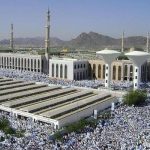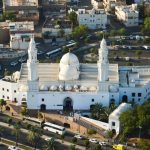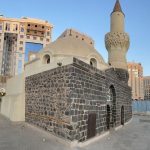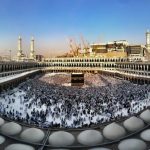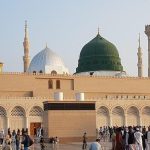Welcome to the Umrah International blog! Here, we delve into the profound significance of the Holy Qur’an, a treasure of wisdom and guidance that has shaped the lives of millions of Muslims around the globe. Join us as we explore the intricacies of this sacred text, designed not only to be read but to be studied, understood, and revered.
Introduction: The Holy Qur’an—A Source of Divine Inspiration
The Holy Qur’an stands as the most widely read book in human history, a beacon of light and a source of immeasurable inspiration for countless Muslims across the world. It is more than just a religious text; it is the foundation of Islamic belief, the essence of faith (imaan), and a critical component in the formation of a just and ethical society. As such, the Qur’an serves as the cornerstone of shariah—Islamic law—guiding the moral and ethical compass of its followers.
At Umrah International, we strive to cultivate a profound connection between the global Muslim community (ummah) and the heart of their faith—the Holy Qur’an. This sacred text is not merely to be read; it beckons us to engage with its depths, to explore its teachings, and to apply its wisdom in our daily lives. It calls for reflection and understanding, providing insights that can guide individuals through the complexities of life.
Our exploration aims to illuminate the Qur’an’s rich tapestry of knowledge, addressing its significance not only for Muslims but also for those who seek to understand the Islamic faith more deeply. In this comprehensive examination, we will unravel the intricacies of the Qur’an—its language, structure, and the divine revelations that have been preserved through the ages. The information presented draws from the invaluable teachings and lectures of Shaykh-ul-Islam, to whom we owe our deepest gratitude. While every effort has been made to ensure accuracy, any errors in this compilation are solely our responsibility, and we humbly seek forgiveness for any mistakes.
As we embark on this enlightening journey, we invite you to immerse yourself in the beauty and complexity of the Holy Qur’an—a text that continues to resonate with millions, offering guidance, solace, and a path towards spiritual fulfillment.
Understanding the Meaning of “Qur’an”
The term “Qur’an” is derived from Arabic roots that reflect its profound significance. It is the literal word of Allah (swt), revealed to the Prophet Muhammad (saw) through the Angel Gabriel (Jibreel). To truly appreciate the essence of the Qur’an, we must explore its etymological roots, grammatical structure, and contextual placement.
Etymology: The Foundation of Understanding
Arabic words often originate from a root system, typically consisting of three letters. This foundational aspect enables a multitude of words to derive from a single root, offering rich layers of meaning. For example, the root word of “Qur’an” helps us unlock a deeper understanding of its implications and importance.
Grammatical Categories: Unpacking Meaning
Each Arabic word falls within specific grammatical categories that imbue it with unique properties. Understanding these characteristics is crucial for grasping the full meaning of the Qur’an. The interplay between the root meanings and grammatical structures shapes our comprehension of its verses.
Contextual Usage: The Key to Interpretation
To fully grasp a word’s meaning, we must also consider its context within the Qur’an. Each verse is deliberately chosen, reflecting the divinely revealed nature of this sacred text. Therefore, a deep understanding of Arabic grammar and linguistics is essential for anyone seeking to provide a comprehensive interpretation (tafseer) of the Qur’anic verses.
The Root Words of the Qur’an
The word “Qur’an” can be traced back to several root words, each revealing a distinct facet of its meaning:
- Qara’a: Meaning “to collect” or “to compile,” this root highlights the Qur’an’s divine compilation and preservation. As stated in Surah Al-Qiyama (75:17), it is Allah’s promise to collect and recite the Qur’an.
- Qar’ana: This root signifies a union or conjunction. The Qur’an’s verses and chapters are intricately linked, forming a harmonious narrative that serves as a guide for humanity.
- Qira’athun: Meaning “to read” or “to recite,” this underscores the Qur’an’s unique status as the most recited book globally. Muslims engage with it daily, and its recitation is especially emphasized during Ramadan.
- Qira’in: The plural of “qarina,” which means evidence or argument. This root illustrates how verses of the Qur’an support and elucidate one another, creating a cohesive message.
Names of the Holy Qur’an: A Testament to Its Grandeur
The Qur’an is known by many names, each reflecting its various attributes:
- Al-Nur (The Light)
- Al-Hukm (The Judgment)
- Al-Dhikr (The Reminder)
- Al-Kitab (The Scripture)
- Al-Furqan (The Criterion)
These titles highlight the Qur’an’s role as a source of enlightenment, guidance, and clarity for those who seek the truth.
Divine Revelation: Understanding “Wahi”
The concept of “Wahi,” or divine revelation, is crucial for comprehending how the Qur’an was conveyed to humanity. It signifies God’s message delivered to His chosen Prophets, encompassing knowledge that transcends human comprehension. This sacred process ensures that the Qur’an remains a relevant and guiding force for Muslims.
The Nature of Wahi
Wahi can manifest in various forms—through direct revelation, dreams, or angelic messages. The Qur’an itself contains numerous references to this divine communication, illustrating its profound significance.
The Literacy of the Holy Prophet Muhammad (saw)
Context of the First Revelation
The first revelation of the Holy Qur’an occurred on the 15th night of Ramadan in the year 610 CE, marking a pivotal moment in the life of the Holy Prophet Muhammad (saw), who was then 40 years old. During this time, he frequently retreated to the Cave of Hira, located approximately three miles from Makkah, for contemplation and spiritual reflection. These periods of solitude often lasted from days to weeks, particularly during the sacred month of Ramadan when he engaged in fasting and prayer.
It was in this profound state of spiritual readiness that the Angel Jibril (a.s) visited him with the command “Iqra,” meaning “Read!” In a Hadith narrated by Ayesha (r.a), the Prophet (saw) responded, “I am not a reader.” This exchange is crucial, as it highlights not merely the Prophet’s (saw) lack of formal education but rather his deep awareness of the gravity of the message being conveyed.
Understanding “Illiteracy” and “Ummi”
The conventional translation of the Prophet’s (saw) words as “I cannot read” is a misunderstanding. He was not being presented with a written text; rather, he was being asked to repeat a divine command. A more accurate translation would be “I am not a reader,” indicating a distinction between formal literacy and the profound spiritual knowledge he possessed. The term “Ummi,” often attributed to the Prophet (saw), does not imply ignorance but signifies someone untrained in conventional education.
The root of “Ummi” comes from “Umm,” meaning mother or origin, suggesting purity and originality. This nomenclature reflects the social context of pre-Islamic Arabia, where many were unlettered. The Prophet (saw) was divinely guided and educated by Allah (swt), transcending typical human limitations. The Qur’an itself asserts, “It is He who has taught the Qur’an; He has created man; He has taught him intelligent speech” (Surah Ar-Rahman, 55:2-4).
Manner and Forms of Revelation
The Holy Qur’an was revealed through various forms, illustrating the multi-faceted nature of divine communication:
- In the Form of Dreams: The initial stages of revelation began with true dreams, which held significant meanings that would become clear upon waking, as narrated by Ayesha (r.a).
- Direct Revelation to the Heart: On certain occasions, revelations were instilled directly into the heart of the Prophet (saw), as emphasized in Hadith where Angel Jibril (a.s) conveyed profound truths and guidance.
- Sound of a Bell: A distinctive method involved the ringing of a bell, which signified the arrival of heavy revelations. This form was particularly intense, often causing physical strain on the Prophet (saw).
- Angel in Human Form: Jibril (a.s) frequently appeared in human guise, facilitating direct communication. Such encounters were not only informative but also served as a means to strengthen the community’s faith.
- True Angelic Form: The Angel Jibril (a.s) also revealed himself in his majestic form, described as having 600 wings, underscoring the gravity and sanctity of the messages he brought.
- Direct Communication from Allah: The Prophet (saw) experienced direct dialogue with Allah (swt) during the miraculous Night of Ascension (Miraj), receiving profound revelations, including the command for obligatory prayers.
The Process of Divine Revelation
The Qur’an was revealed in stages, a process essential for the gradual transformation of society. The first revelation, occurring on the Night of Power (Lailat al-Qadr), signifies its profound importance. While the Qur’an was sent down in one go to the lower heavens, it was gradually revealed to the Prophet (saw) over 23 years to address the evolving circumstances of the early Muslim community.
This gradual approach was purposeful. The new Muslim converts faced immense challenges, transitioning from a society steeped in idolatry to one grounded in monotheism and moral rectitude. The revelations provided not only spiritual sustenance but also specific guidance tailored to the community’s needs.
Revelation in Stages
The Qur’an’s piecemeal revelation was not a sign of deficiency but a divine strategy to reinforce faith, provide timely guidance, and address specific situations. As noted in Surah Al-Furqan (25:32), skeptics questioned why the Qur’an was not revealed all at once, to which Allah (swt) responded, indicating that gradual revelation served to strengthen the Prophet’s (saw) heart and the community’s faith.
The Impact of Revelation
The continuous interaction between the Prophet (saw) and Angel Jibril (a.s) solidified the bond between the Divine and the nascent Muslim community. Each revelation instilled a profound sense of reliance on Allah (swt), reinforcing the importance of faith in the face of adversity. The unwavering support provided through these divine messages not only transformed individual lives but laid the foundational ethos of a new society that valued justice, compassion, and the worship of the One True God.
Through these profound revelations, the Prophet Muhammad (saw) emerged as the final messenger, embodying a model of integrity, truthfulness, and spirituality that continues to inspire millions around the world today.
The Sacred Journey of Revelation: Recording the Qur’an
The Oral Tradition: A Living Legacy
The preservation of the Holy Qur’an began with an extraordinary oral tradition, rooted deeply in the cultural fabric of 7th-century Arabia. The initial method of safeguarding the verses was through memorization, known as hifz. Upon receiving divine revelation, the Prophet Muhammad (saw) would commit each verse to memory with remarkable clarity and urgency. This practice resonates with the Qur’anic assertion: “…an apostle from God, rehearsing scriptures, kept pure and holy…” (98:2). Following his recitation, the Prophet would share the verses with his Companions, fostering a communal spirit of memorization and understanding.
Hadrat Ibn Mas’ud holds a distinguished place in this narrative, being the first to publicly recite the Qur’an in Makkah. In an era where literacy was scarce, the Arabs possessed a profound aptitude for memorization, cultivated through their rich oral traditions of poetry and storytelling. This cultural context enabled the early Muslims to absorb the Qur’anic verses with relative ease, a process that the Prophet (saw) actively encouraged. Hadrat Uthman ibn Affan’s narration emphasizes this communal responsibility: the most esteemed Companions were those who learned the Qur’an and imparted its teachings to others.
Recitation was not merely an act of learning; it became a daily ritual intertwined with the five daily prayers, embedding the verses within the daily lives of the believers. The emotional weight of this engagement was palpable; the Prophet (saw) was often moved to tears while listening to recitations, notably when Hadrat Ibn Mas’ud recited Surah Nisa. Such moments underscored the profound impact of the Qur’an on the hearts of its followers.
The Written Word: A Divine Record
In tandem with oral transmission, meticulous written records of the Qur’an were established during the Prophet’s lifetime. The Prophet (saw) directed a group of scribes to document the revelations on various materials, including parchment, leather, and palm leaves. Among these scribes, Hadrat Zaid ibn Thabbit emerged as a prominent figure, entrusted with the critical task of compiling the verses.
Each revelation was carefully recorded under the Prophet’s supervision, who would ensure that every word was accurately captured and positioned correctly within the larger framework of the Qur’an. Hadrat Ibn Abbas recounts that the Prophet (saw) would call upon his Companions to write down revelations and specify their placement within the Surah, affirming that this divine order was beyond human alteration.
The Qur’an: A Comprehensive Guide to Life
The Qur’an transcends the notion of a mere religious text; it serves as a comprehensive guide for all aspects of life—encompassing morality, ethics, social justice, and personal relationships. This is why it is often referred to as the “living Qur’an,” a testament to its continual relevance and application in daily existence. The verses are recited not only in prayer but also woven into the fabric of societal norms and practices, ensuring their constant engagement.
The divine promise of preservation is articulated in the Qur’an itself: “We have without doubt sent down the message and We will assuredly guard it (from corruption)” (Al-Hijr, 15:9). This assurance speaks to the Qur’an’s enduring integrity, free from human error or alteration.
The Revelation Period: Dividing the Divine Message
The revelation of the Qur’an commenced on the 16th of Ramadan in 610 CE, unfolding over a remarkable span of 22 years, 2 months, and 22 days. Scholars categorize these revelations into two primary phases: those received in Makkah (Makki Surahs) and those received in Madinah (Madani Surahs). The following table summarizes this division:
| Period | Years | Months | Days |
| Total Revelation Period | 22 | 2 | 22 |
| Makki Period | 12 | 5 | 13 |
| Madani Period | 9 | 9 | 9 |
Out of the 114 Surahs revealed, the majority emerged during the Makkah period, focusing on essential theological concepts such as Tauheed (the oneness of God), morality, and the afterlife. In contrast, the Madani Surahs, revealed following the Hijrah, addressed the practical challenges of a growing Muslim community, outlining laws and ethical guidelines that would shape societal governance.
Structural Composition and Divine Order
The Qur’an’s Surahs are structured not chronologically but according to a divine arrangement, predominantly by length. Longer Surahs appear earlier in the text, with shorter ones following, although exceptions exist, such as Surah Al-Fatiha, which consists of only eight verses yet holds a pivotal place.
To facilitate engagement, especially during the month of Ramadan, the Qur’an has been divided into thirty parts, known as Juz, enhancing accessibility for reflection and recitation. Each Surah is further divided into sections called Rukuhs and individual verses known as Ayahs.
The final revelation occurred on the 9th of Dhul Hajj in the 10th year of Hijrah, marking a watershed moment in Islamic history. The last verse revealed encapsulates the completion of the divine message: “This day we have perfected for you your religion, and have completed My bounties for you, and have approved Islam as the religion for you” (5:3). During this momentous year, the Angel Jibril (a.s) recited the entire Qur’an with the Prophet (saw) twice, solidifying its final structure and content.
Compilation of the Divine Revelation: A Three-Phase Process
The compilation of the Qur’an unfolded in three distinct phases, ensuring the integrity and preservation of this divine message.
1. During the Lifetime of the Holy Prophet (saw)
The Prophet Muhammad (saw) actively oversaw the recording of the Qur’an throughout his life, instructing scribes to document revelations as they came forth. This process involved a meticulous arrangement of verses under the Prophet’s guidance, ensuring that the Qur’an remained coherent and accurate.
2. The Era of Sayyidina Abu Bakr (rad)
Following the Prophet’s (saw) passing, the urgency to compile the Qur’an into a cohesive volume became paramount, particularly after the Battle of Yamamah, where many hafiz were martyred. Hadrat Umar ibn Kattab (rad) voiced his concerns to Sayyidina Abu Bakr (rad), fearing the potential loss of the Qur’an due to the deaths of those who had memorized it. Initially reluctant to undertake such a task, Sayyidina Abu Bakr (rad) was ultimately convinced by Hadrat Umar’s (rad) heartfelt arguments, leading him to commission Hadrat Zaid ibn Thabbit (rad) to collect and compile the verses.
Hadrat Zaid (rad) faced a monumental challenge, expressing that it would be easier to move a mountain than to undertake such a significant task. However, through divine inspiration, he accepted the responsibility. Zaid (rad) diligently gathered all written fragments from date leaves, parchment, and leather, and cross-verified them with the memories of numerous hafiz. This painstaking effort culminated in the first official compilation of the Qur’an, which was entrusted to Sayyidina Abu Bakr (rad) and later passed to Sayyidina Umar (rad) and then to Hadrat Hafsah (rad).
3. The Caliphate of Sayyidina Uthman bin Affan (rad)
As Islam expanded, the inclusion of diverse tribes and cultures led to variations in the recitation of the Qur’an. Hadrat Hudaifah bin Yaman (rad) raised concerns about these discrepancies after witnessing differing recitations during his military campaigns. Sayyidina Uthman (rad) recognized the potential for division and sought to preserve the unity of the Ummah by commissioning a standardized version of the Qur’an.
Uthman (rad) requested the original compilation from Hadrat Hafsah (rad) and appointed Hadrat Zaid ibn Thabbit (rad) as the head of a committee to produce exact copies. Other members of the committee included Hadrat Abdullah ibn Zubair, Hadrat Sa’id ibn Al-A’as, and Hadrat Abdur Rahman ibn Harith (rad). Under Uthman’s guidance, they meticulously transcribed the text, resolving any discrepancies in favor of the Quraish dialect—the language of revelation.
Once the standardized copies were produced, the original was returned to Hadrat Hafsah (rad). Uthman (rad) ordered that all other Qur’anic manuscripts, whether complete or incomplete, be destroyed to prevent confusion. This decisive action ensured that the Qur’an remained unaltered, retaining its original form and meaning.
Conclusion: Embracing the Message of the Qur’an
The journey of the Qur’an from revelation to compilation is a testament to the unwavering commitment of the Prophet Muhammad (saw) and his Companions in preserving this divine message. Through the meticulous interplay of oral and written traditions, the Qur’an has remained a living guide for millions, embodying timeless wisdom and spiritual guidance. With Allah (swt) as its ultimate guardian, the Qur’an stands resilient, ready to inspire and illuminate the hearts of believers until the end of time.
As we explore the depths of the Holy Qur’an, we recognize its unparalleled importance in the lives of Muslims worldwide. From its rich etymology to its divine preservation, the Qur’an is more than a text; it is a living guide that continues to inspire and instruct. At Umrah International, we are committed to helping you connect with this sacred scripture and its timeless wisdom.
Thank you for joining us on this journey through the Holy Qur’an. Stay tuned for more insights and reflections as we continue to explore the beauty of Islamic teachings.






